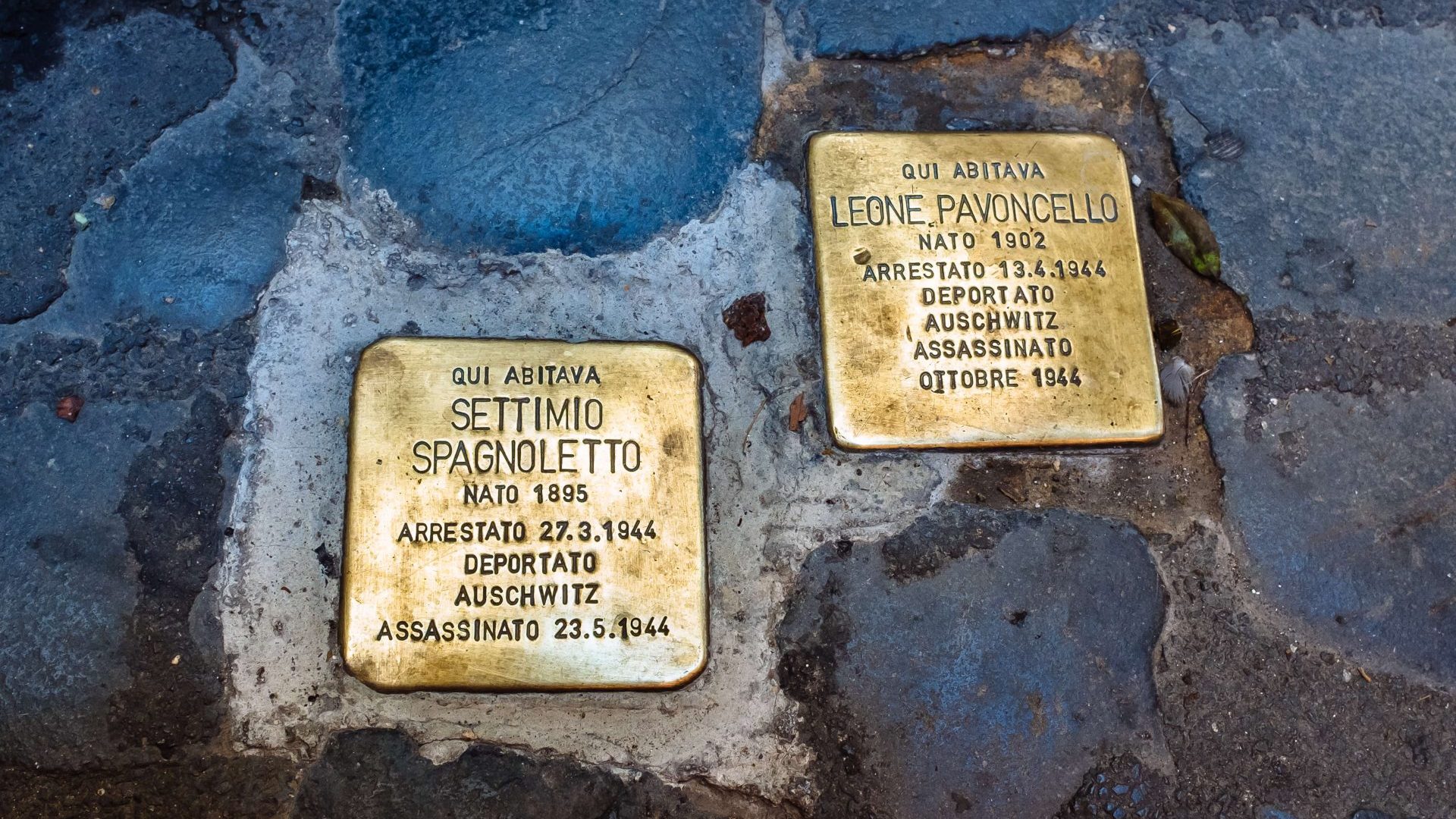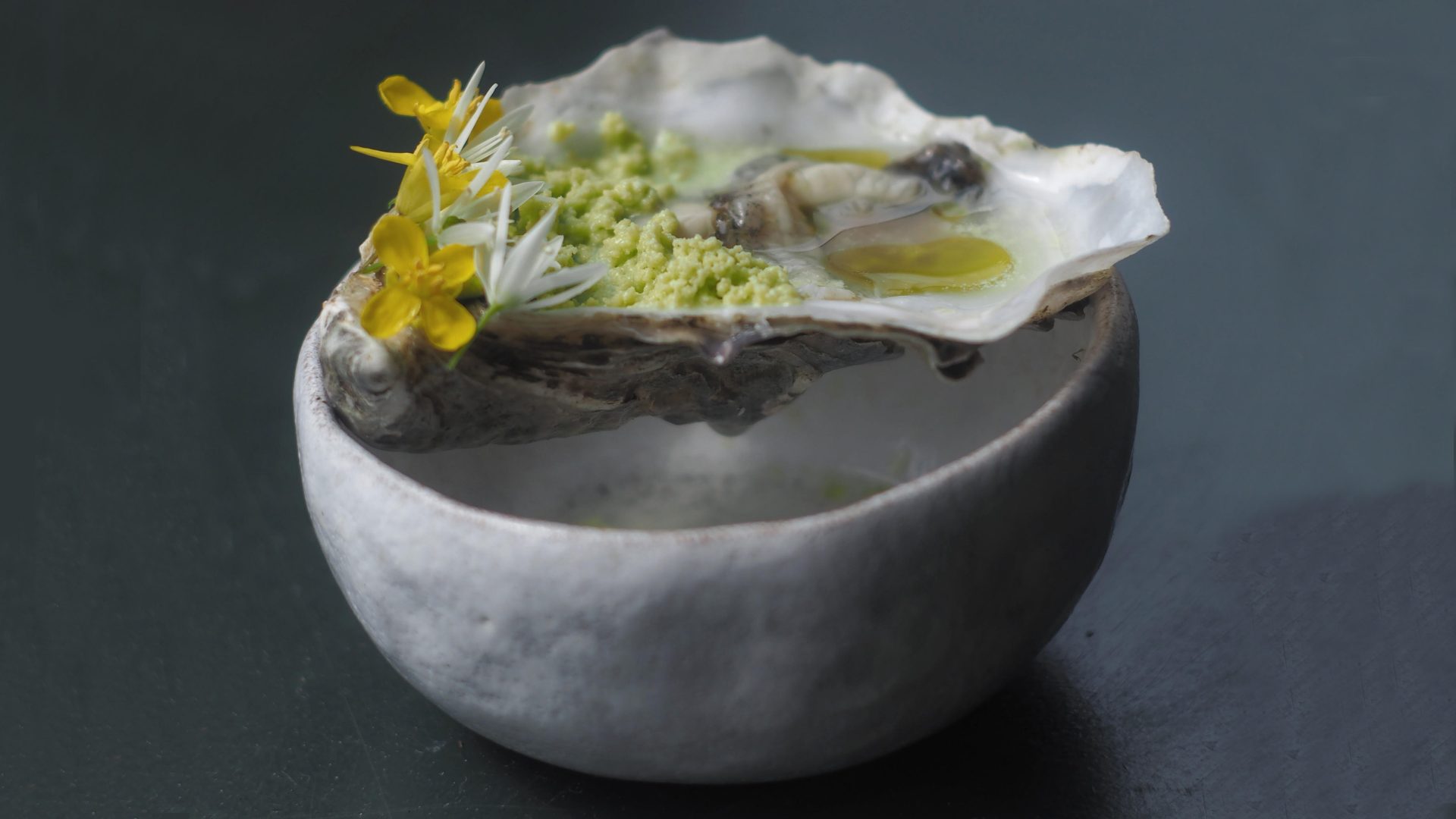The Roman Ghetto is a great place to eat. That’s how I was introduced to it
years ago, by friends, and that’s why I still regularly go there. Its single main street is lined with restaurants serving wonderful Roman Jewish food. I love Italian food but sometimes I fancy something a little different. One speciality is the carciofo alla giudia. This deep-fried artichoke is a feast of crispy, sweet, salty, succulent deliciousness and I never get tired of it. You will also find hummus, couscous, fish or meat in spicy sauces and other pan-Mediterranean delicacies. Even the local variations on traditional Roman favourites like amatriciana or carbonara have an individual twist, using salted beef instead of the familiar guanciale (cured pig’s cheek). It’s a little bit exotic but also very Roman.
The Jewish community in Rome is probably the oldest outside the Middle East, and its origins predate both Christianity and written history. The Ghetto was created in 1556 by Pope Paul IV, following years of increasing persecution. Under the terms of the papal decree, the city’s 2,000 Jews were required to live within a walled area near the Tiber and to return there each day before sundown. They were also required to pay for and build the wall themselves. The experience of the following three centuries was one of legalised theft, discrimination, overcrowding and poverty. It is not surprising, therefore, that in the late 19th century, when the new Italian state abolished all restrictions, most of the inhabitants enthusiastically supported the demolition and redevelopment of nine tenths of the old ghetto in the name of progress and improved public health.
What remains of the Ghetto today is just a fraction of the original and it is
strangely unevocative of its history, with the standard Roman apartment blocks dominating the few remaining older buildings. But there are traces of
a more recent, troubling past to be found if you look down at the street itself. There, you may notice small clusters of shiny brass cobbles among the ubiquitous black basalt variety. These are inscribed with names and dates. Each one represents a Jewish person who was arrested and murdered by the Nazis, and is placed outside the doorway of the last building in which they lived.
At dawn on October 16 1943, German forces sealed off the Ghetto area, which still contained a sizeable proportion of the city’s Jews, effectively turning it into a prison. Some people managed to escape over the rooftops but, during the subsequent raid, 1,259 people were arrested. Non-Jewish prisoners were later released but, two days later at least 1,035 prisoners were loaded on to trains and taken to Auschwitz. Only 16 were left alive at the end of the war.
One of those who did survive was Settimia Spizzichino. You won’t find a brass cobble for her but there are four outside the house at No 2 Via Della
Reginella where she once lived with other members of her family. These
bear the names of her mother Grazia di Segni, her two sisters Ada and
Giuditta Spizzichino, and Ada’s two-year-old daughter Rossana Calo, all of whom were murdered.
The inscriptions are quite small and you will need to crouch down in order
to read them. This is intentional, according to the German artist, Gunter
Demnig, who devised and created these small memorials, as it necessitates a pause in one’s progress, a gesture of respectful contemplation. There are more than 200 of these brass cobbles in Rome, known here as pietri d’inciampo, (stumbling stones) and they form part of a much larger project. There are more than thirty thousand stumbling stones around Europe. Demnig began the project in 1992 as a way of giving a name and a story to victims who had been stripped of their identity and callously reduced to numbers. They now constitute the largest, and at the same time the most intimate of memorials to the Holocaust.
The Roman stumbling stones are not confined to the Ghetto. I’ve come across them in Trastevere and other parts of the city. The Nazis rounded up
around 2,000 of the city’s Jews. Those who managed to escape spent the last
eight months of the Nazi occupation in constant fear for their lives, often
helped and sheltered by ordinary Italians who were running a very great
risk by helping. There were other Romans, fewer in number, who collaborated, enthusiastically or otherwise. Fascists, score-settlers, public officials. It’s a complicated story, clouded by myths and conflicting histories that divide Italians to this day.
There are other memorials to the victims of the Holocaust in Rome. One can be found on platform 1 at Tiburtina station. I see it often as this is where I catch the train back home. It is also the station from which Rome’s arrested Jews were packed into wagons and transported to Auschwitz.
The banality of the location, with bored commuters and passing trains, makes it all the more poignant. But it’s the stumbling stones that I find almost unbearably affecting — these tiny, glinting memorials beneath our feet, bearing just the simplest details of ordinary lives lived and then brutally
extinguished.
Contemplating these details feels important to me in linking our own humanity to that of these people who no longer exist, and by extension to
those we will never meet or ever know of. Our common humanity is the most important thing we have. When we forget that, we become capable of
terrible things.
David Killen is the former art director of Prospect magazine and has lived in the Sabine Hills in central Italy for seven years



